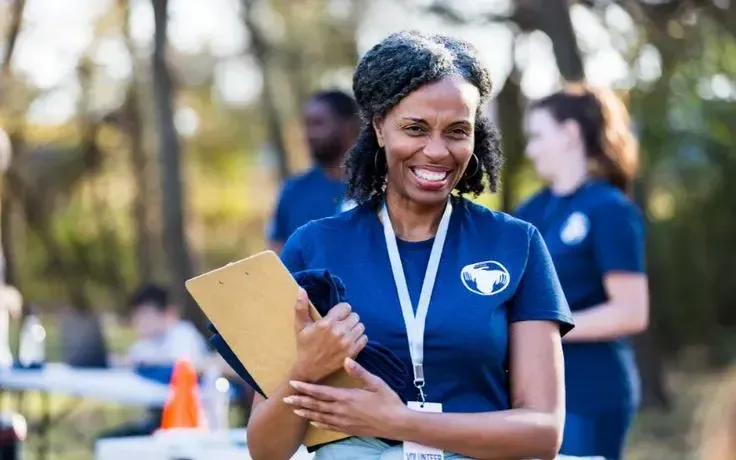Discover how AI is transforming creativity, from generating ideas to solving complex problems. Can machines match human ingenuity, or is true creativity uniquely human? Explore the dynamic partnership between AI and human insight, and unlock the potential for groundbreaking innovation in the digital age.
Introduction
In today’s fast-paced business world, companies increasingly rely on AI to tackle complex challenges, from optimizing supply chains to generating marketing strategies. AI tools are used to write content and answer customer queries, making workflows more efficient. As AI takes on more tasks, many wonder: Can it go beyond routine processes and offer creative solutions to complex problems, as humans do?
This article explores whether AI can truly match human ingenuity in creative problem-solving. We’ll dive into AI’s current capabilities, examine where human creativity excels, and uncover the potential for collaboration between humans and machines. By the end, you'll gain a clear understanding of AI’s role in creativity and how blending human insight with AI’s processing power can unlock innovative solutions. Whether you're a business leader, creative professional, or tech enthusiast, this exploration will shed light on how to leverage AI for more impactful results.
1. Understanding Creative Problem-Solving
Creative problem-solving is a uniquely human endeavor, driven by emotions, experiences, and imagination. It involves identifying challenges and developing innovative, often unconventional, solutions to overcome them. Unlike routine decision-making, creative problem-solving requires individuals to think outside the box, draw from their insights, and experiment with new approaches.
Human creativity is deeply intertwined with emotions and life experiences. When faced with a problem, humans rely on intuition, empathy, and contextual knowledge to generate solutions. For example, a marketer might use personal experiences or insights into customer behavior to craft an emotionally resonant advertising campaign. This is not something easily replicated by machines, as it draws from the nuanced understanding of human nature and the ability to connect disparate ideas.
On the other hand, AI approaches problem-solving through data processing and pattern recognition. Machine learning models analyze large datasets, identifying trends and patterns that can inform decision-making. While AI may mimic some aspects of creative thinking, such as generating new combinations of ideas or suggesting unexpected solutions, it lacks the emotional depth and intuition that drive true human ingenuity. For instance, an AI might create a visually appealing graphic design, but it doesn't grasp the deeper meaning or emotional resonance behind the design choices, which are often critical in solving creative problems.
2. How Generative AI Works in Business Tasks
Generative AI is increasingly being applied in business settings to handle tasks that were once solely the domain of human workers. Its core strength lies in its ability to automate processes, analyze massive datasets, and optimize operations with impressive speed and accuracy. Some of its most prominent applications include automating customer service interactions through chatbots, optimizing supply chains using predictive analytics, and even generating marketing content based on user data.
AI has also been used to develop innovative solutions in business. For instance, AI-driven tools are now used to design products, generate logos, and create targeted marketing strategies by analyzing consumer behavior. In product development, AI systems can model and simulate thousands of potential designs based on input data, allowing companies to explore more design possibilities than a human could within a limited time frame.
A compelling case study is that of the pharmaceutical company, Insilico Medicine, which used AI to solve a major challenge in drug discovery. The company applied generative AI models to identify potential new drug compounds by analyzing biological data and predicting which molecular structures could effectively treat diseases. By leveraging AI, Insilico Medicine drastically reduced the time and cost of early-stage drug discovery, proving that AI could creatively solve problems in industries where innovation is critical.
3. The Strengths and Weaknesses of AI in Creativity
Strengths
One of the greatest strengths of AI is its ability to process and analyze vast amounts of data quickly, something humans simply cannot match. AI systems, like those used in finance or healthcare, can sift through large datasets, identify patterns, and make predictions that help solve complex problems. This ability to recognize patterns in complex systems is essential in industries where quick decision-making and optimization are paramount.
For instance, Google DeepMind’s AlphaGo demonstrated AI’s potential in creative problem-solving when it defeated the world’s best Go player. The AI system employed unconventional moves that surprised even expert players, showcasing its ability to think beyond typical strategies and develop new solutions within the confines of the game. AI-generated art, such as that created by GANs (Generative Adversarial Networks), also illustrates how AI can create visually striking and innovative images by learning from existing art styles and blending them in novel ways.
Weaknesses
However, AI falls short in several key areas of creativity. One significant limitation is its lack of emotional intelligence and empathy. Human creativity is often driven by an understanding of emotional nuances and a deep connection to societal values. For instance, a songwriter might craft lyrics based on personal experiences of love or loss, which gives the song an emotional depth that AI cannot replicate.
Additionally, AI struggles with ethical and value-based decisions. While AI can analyze data and generate solutions, it lacks the moral compass to consider the wider impact of those decisions on human lives. For example, an AI might suggest a business strategy based purely on profitability, without considering the potential harm to the environment or the well-being of employees.
Perhaps most critically, AI has difficulty creating original ideas without human input. Generative AI systems are trained on existing data, meaning they can only create variations or combinations of what they’ve learned. This often limits AI’s capacity for true innovation, as it can’t transcend its programming or draw from real-world experiences to develop entirely new concepts.
4. Can AI Match Human Creativity?
The question of whether AI can truly be "creative" is a topic of ongoing philosophical debate. Creativity, by its nature, is a human trait linked to consciousness, self-awareness, and emotions. While AI systems can simulate creativity by generating new ideas, they do so by following pre-defined algorithms and learning from patterns in existing data.
Examples of AI appearing creative include OpenAI’s GPT models, which can write poems, essays, and even screenplays. However, these creations are constrained by the data they were trained on. An AI might produce a beautifully written poem, but it lacks the personal context, emotional depth, or intentional symbolism that a human writer brings to the table.
Human cognitive processes, especially those related to creativity, involve divergent thinking, where the mind makes connections between seemingly unrelated concepts. In contrast, AI systems are based on neural networks and machine learning algorithms that focus on optimizing outcomes based on historical data. While AI can generate impressive results, such as new music compositions or artwork, its creativity is more a product of statistical probability than a flash of inspiration.
5. Synergy Between Human Creativity and AI
Despite AI’s limitations, research shows that the most innovative solutions often emerge when humans and machines collaborate. AI can enhance human creativity by taking over repetitive tasks, allowing people to focus on higher-level, imaginative work. For example, AI tools in architecture can handle structural calculations and material optimization, freeing architects to focus on the aesthetics and functionality of a design.
A study by Harvard Business Review highlighted that teams of humans and AI systems produced better results than either could alone. In the pharmaceutical industry, for instance, AI systems can analyze vast amounts of biological data and suggest potential drug compounds. However, human researchers are still needed to interpret those findings, apply them within a broader ethical context, and make intuitive leaps that the AI might not consider.
A notable example of this synergy is the collaboration between human architects and AI systems in designing complex structures. AI can suggest structural optimizations or novel design approaches that might not be immediately apparent to the human mind. In one c⁷ase, AI-assisted design led to the creation of more sustainable, energy-efficient buildings by suggesting innovative uses of space and materials that humans might have overlooked.
6. Potential Future Developments
As AI continues to advance, we can expect even greater integration of AI into creative industries. Innovations in neural networks, machine learning, and generative AI models like GPT and DALL-E are already pushing the boundaries of what AI can achieve in terms of creativity. These systems are becoming increasingly capable of generating artwork, music, and even complex narratives, suggesting that AI will play a more significant role in the creative process moving forward.
One exciting potential development is the ability of AI to mimic human-like creativity through reinforcement learning. By continually improving its responses based on feedback, AI systems could learn to create more nuanced, emotionally resonant content. For instance, AI-generated stories might evolve to include deeper character development or explore more complex themes over time.
Predictions about AI’s future in creative industries suggest that collaboration between humans and AI will remain essential. While AI may grow more capable of generating creative content, human oversight will likely still be necessary to guide these systems and ensure their outputs align with ethical standards and emotional depth. In industries like marketing, entertainment, and design, the best outcomes will come from a model of shared creativity, where human insight complements AI’s ability to rapidly process information and suggest novel solutions.
Conclusion
AI has demonstrated impressive capabilities in creative problem-solving, excelling at processing large datasets, recognizing patterns, and offering innovative solutions. However, it remains limited in areas where human creativity thrives—empathy, intuition, and the ability to think outside the box. While AI can assist in generating ideas, true creativity comes from the human mind’s ability to interpret, empathize, and make intuitive leaps.
The future of creativity lies in the synergy between AI and human ingenuity. By combining AI’s speed and efficiency with human insight, we can unlock innovative solutions that neither could achieve alone. As AI technology continues to evolve, the most successful outcomes will come from collaborative efforts that harness the strengths of both human and machine creativity.


























